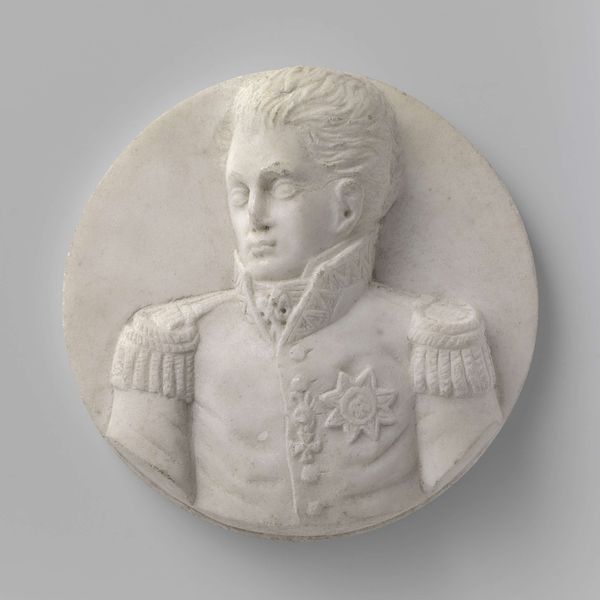
sculpture, marble
#
portrait
#
neoclacissism
#
16_19th-century
#
sculpture
#
marble
Dimensions: 50.5 × 47.9 × 22.2 cm (19 7/8 × 18 7/8 × 8 3/4 in.)
Copyright: Public Domain
This is William Rush's General Andrew Jackson, a plaster sculpture dating back to the early 19th century. At first glance, the sculpture impresses with its neoclassical composure and the stern expression of its subject. Rush's handling of plaster is particularly noteworthy. He eschews a highly polished surface, opting instead for a matte texture that catches the light in subtle ways. The texture enhances the play of light and shadow, accentuating Jackson's features and lending the bust a sense of gravity and realism. Note how the artist has used the rigid material to create soft, flowing lines in Jackson’s hair and the drapery of his military attire. This contrast is central to the statue's appeal. Consider how Rush, by choosing plaster over marble, democratized access to portraiture. While marble was reserved for the elite, plaster allowed for broader participation. Rush’s focus on texture is a means of disrupting classical ideals of perfection. These formal choices create a work deeply embedded in the changing cultural and political landscape of its time.
Comments
No comments
Be the first to comment and join the conversation on the ultimate creative platform.













